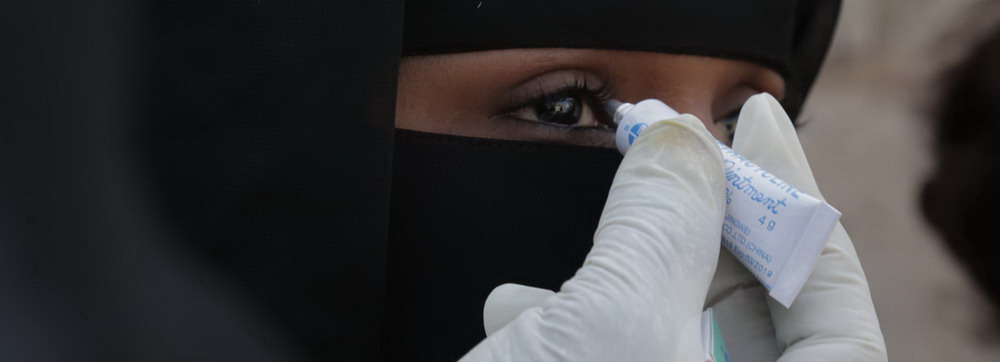Introduction

Trachoma is the leading infectious cause of blindness in the world. Trachoma is a disease of the eye caused by infection with the bacterium Chlamydia trachomatis. Infection spreads through personal contact (via hands, clothes or bedding) and by flies that have been in contact with discharge from the eyes or nose of an infected person. With repeated episodes of infection over many years, the eyelashes may be drawn in so that they rub on the surface of the eye, with pain and discomfort and permanent damage to the cornea.
The WHO grading system for trachoma classifies the disease in 5 grades:
- Trachomatous inflammation – follicular – which mostly requires topical treatment.
- Trachomatous inflammation – intense – during which topical and systemic treatments are considered.
- Trachomatous scarring – when scars are visible as in the tarsal conjunctiva and which may obscure tarsal blood vessels.
- Trachomatous trichiasis – when an individual is referred for eyelid surgery; and
- Corneal opacity – a stage during which a person is irreversibly blind.
Elimination programmes in endemic countries are being implemented using the WHO-recommended SAFE strategy, which consists of:
- Surgery to treat the blinding stage (trachomatous trichiasis);
- Antibiotics to clear infection, particularly mass drug administration of the antibiotic azithromycin, which is donated by the manufacturer to elimination programmes, through the International Trachoma Initiative;
- Facial cleanliness; and
- Environmental improvement, particularly improving access to water and sanitation.
In the Eastern Mediterranean Region, endemic areas requiring interventions against trachoma are found in Afghanistan, Egypt, Pakistan, Sudan and Yemen. Based on 2019 data, about 13 million people live in these areas and are at risk of trachoma blindness.
Elimination efforts need to continue to satisfy the target set by World Health Assembly resolution WHA 51.11, which is elimination of trachoma as a public health problem. Particularly important will be the full engagement of multiple actors involved in water, sanitation and socioeconomic development. Four countries in the Eastern Mediterranean Region had been validated by WHO as having eliminated trachoma as a public health problem – Islamic Republic of Iran, Morocco, Oman and Saudi Arabia. WHO is targeting elimination as a public health problem in all the remaining countries by 2030.


